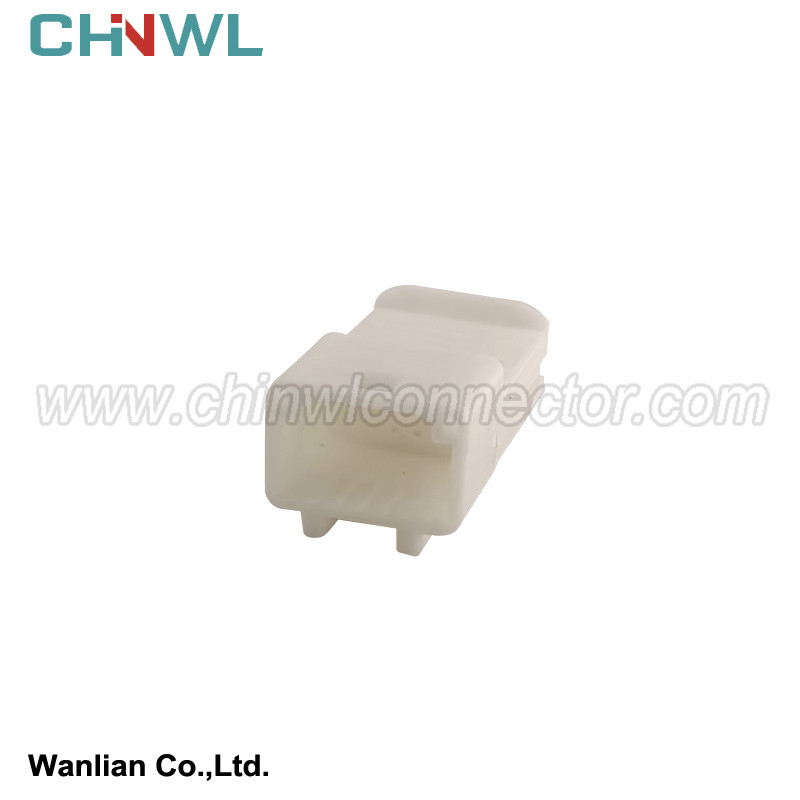

Wanlian #: WL121S2-0.7-11
Mfr. #: 1473407-1 1565894-1
Mating #: WL121S2-0.7-21
Accessories: Terminal Seal
|
Wanlian part number: |
|
WL121S2-0.7-11 |
|
Original number: |
|
1473407-1 1565894-1 |
|
Gender: |
|
Male |
|
Specification: |
|
Housing: PBT+G; PA66+GF; PA66; PBT; Nylon |
|
Type: |
|
Connector |
|
TUV, TS16949, ISO14001, ISO 9001, RoHS conform: |
|
Yes |
|
MOQ: |
|
No minimum order quantity |
|
Supply sample: |
|
Yes |
|
Customized drawing with Decal, Frosted, Print are available as request |
|
Yes |
|
Payment method: |
|
We accept Paypal, TT, Alipay, West Union etc. |
|
Transportation method: |
|
Air Transport: UPS, DHL, FEDEX etc; Sea Transport; Railway Transport; Freight Forwarding etc. |
|
Production Capacity: |
|
1000000pieces/Month |

1.1.2 Elastic structure is adopted on the terminal
The elastic structure of the terminal is shown in Figure 2. The elastic structure on the terminal means that the elastic structure required for the assembly of the terminal and the sheath is designed on the terminal. During the assembly process of the terminal and the sheath, the spring tongue (the elastic structure designed on the terminal) is deformed by force to realize Assembly of terminals and housings. After the terminal and the sheath are assembled in place, the terminal spring returns to its original state due to the release of the force. The cooperation between the spring tongue of the terminal and the hanging table structure designed on the sheath ensures the effective positioning of the terminal by the sheath. The yield strength of the terminal spring determines the retention of the terminal in the housing. From the formula (1), it can be seen that when designing the spring tongue of the terminal, when the material is selected, the allowable shear stress of the material is fixed, and it is necessary to ensure that the product meets the requirements of the retention force (force in the shear direction) of the terminal in the sheath , it is necessary to ensure that the shear area of the terminal elastic tongue meets the required value. In practice, due to the design gap between the terminal and the sheath, in addition to considering the shear area (material thickness and width of the spring tongue) of the terminal spring tongue, it should be ensured that the terminal spring tongue and the hanger designed on the sheath should be connected under extreme severe conditions. The platform structure has a complete fit.
Sheath Material Selection
Commonly used materials for connector sheaths are: polyamide (commonly known as nylon), polybutylene terephthalate (PBT), ABS, etc. For the elastic tongue structure of the sheath, the toughness of the material is generally considered, and the size of the elastic tongue structure is designed according to the allowable yield shear stress of the material that meets the toughness requirements. It should be emphasized that the allowable yield shear stress of the material should be calculated according to the allowable value after the material has been subjected to the possible high temperature aging, temperature-humidity cycle, chemical liquid corrosion and other tests of the connector. If the spring tongue structure designed according to the allowable yield shear stress value after the test cannot meet the requirements, it should be considered to replace the material or use a secondary lock structure (Figure 2) to solve the problem. When the initial holding force of the connector is normal, but the holding force is unqualified after the test and the needle is withdrawn, it is generally caused by the design of the spring tongue structure according to the initial allowable yield shear stress of the material used.
Simple instructions:
We have product Catalogue,please contact us on skype,WhatsApp or Email.
If you can't find a product on our website or catalog, We deal with over 10,000 items, our catalog doesn’t cover all products. And we are developing 100+ molds yearly, which means around 10 new products are created in our factory. So don’t go away, just send us your photo or part no, we’ll check for you.